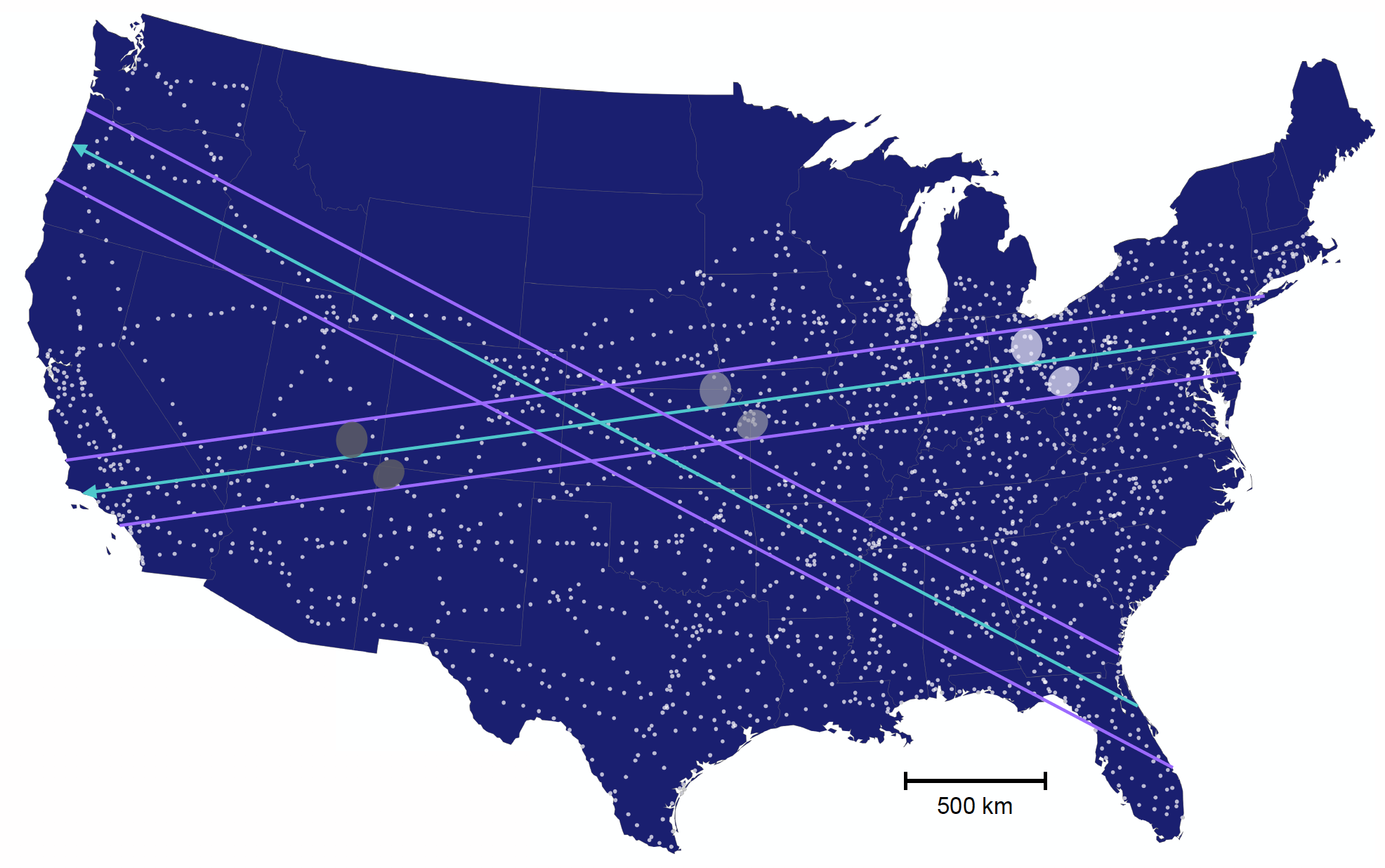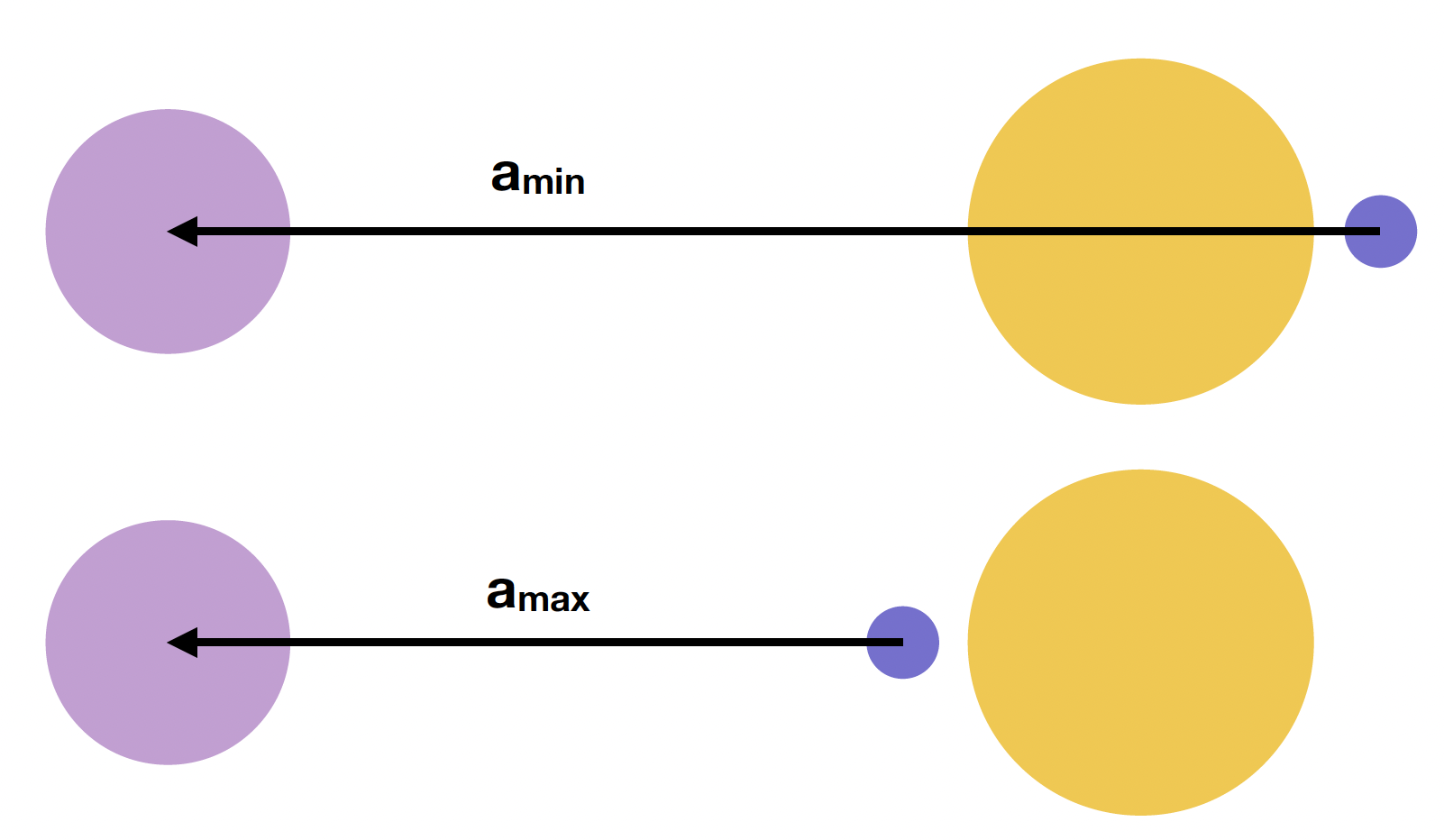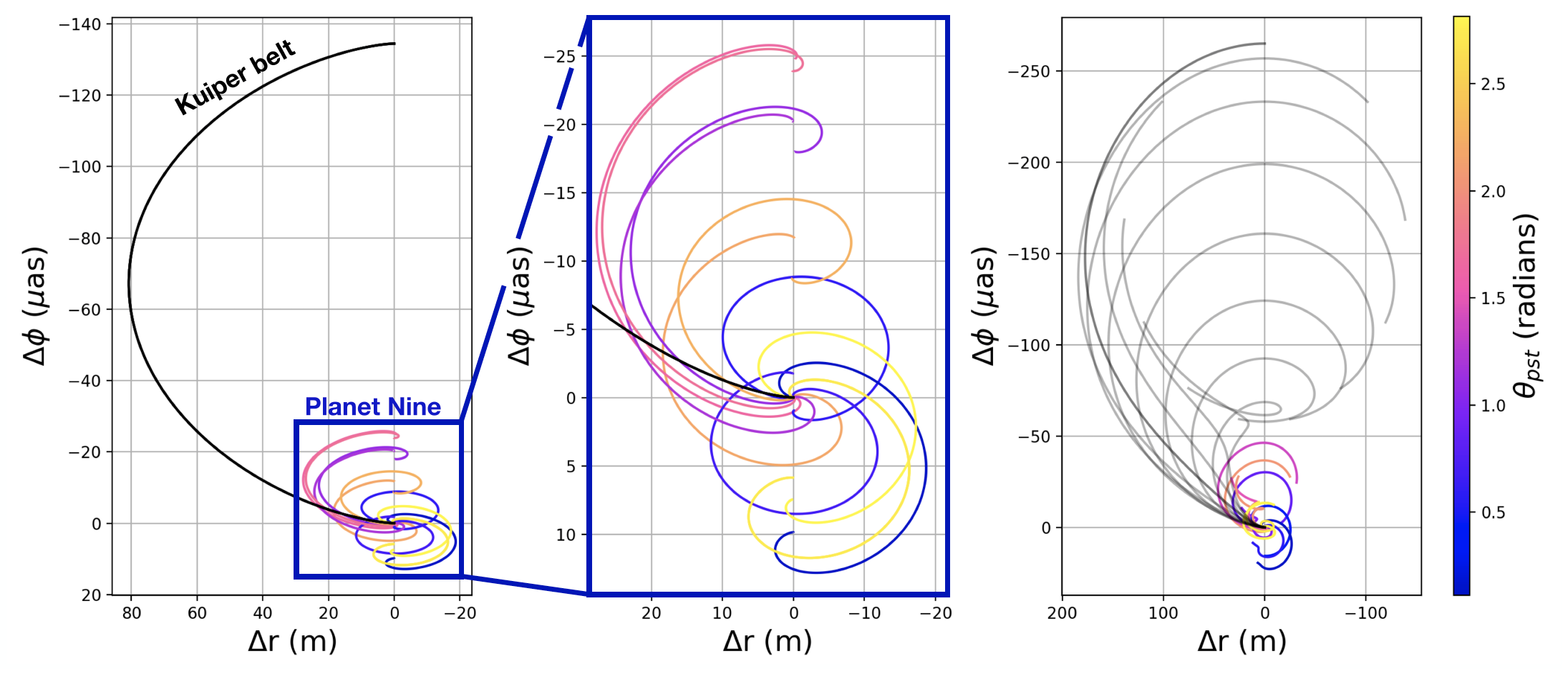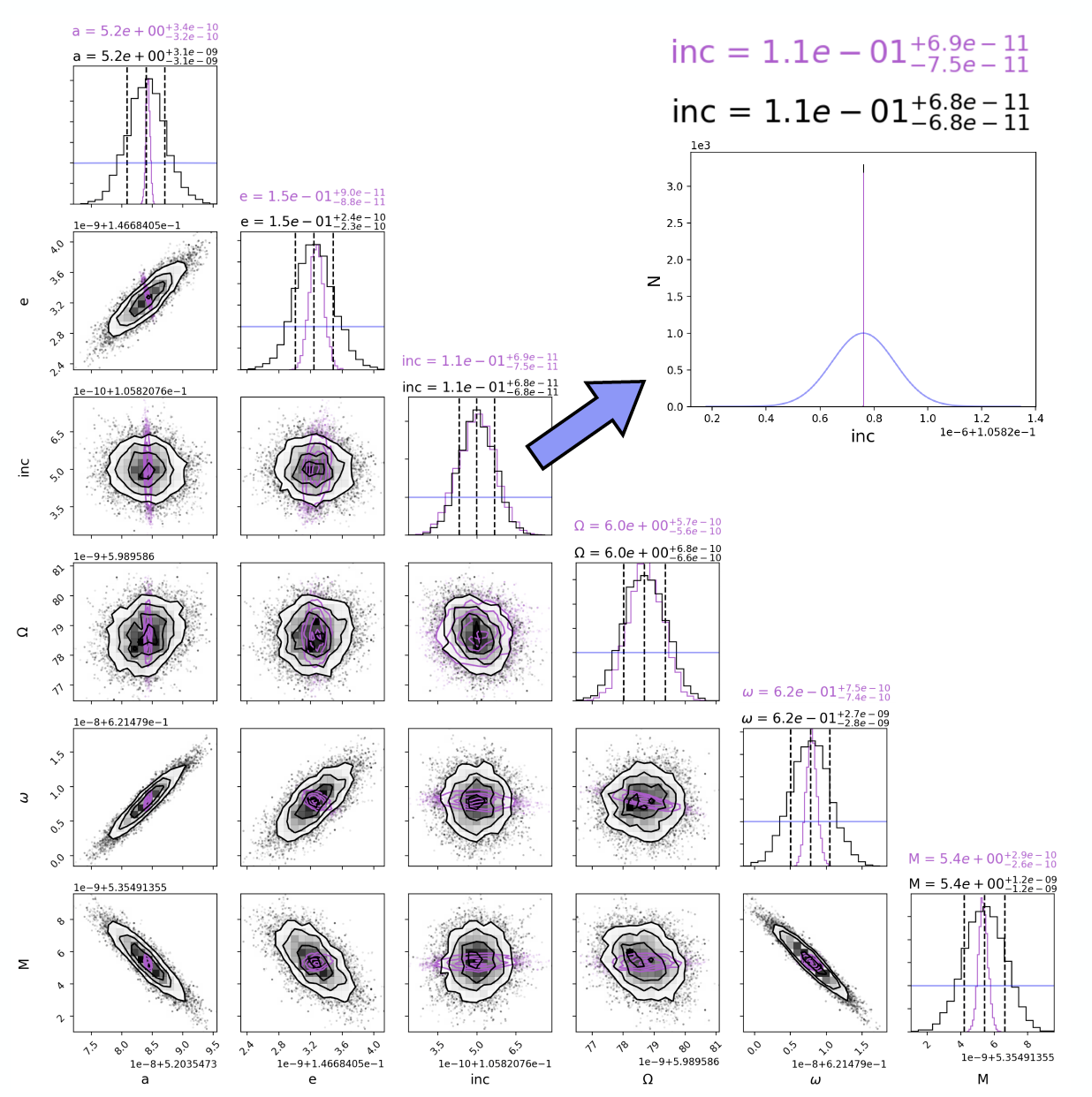Research Highlight #1
The Case for a Large-Scale Occultation Network
(Rice & Laughlin 2019 AJ 158, 19)Understanding the sizes and orbits of minor planets within the solar system is crucial to characterize the origins and evolutionary pathways of our home planetary system. Measurements of occultations – events during which a foreground object passes in front of a background star, briefly blocking out its light – can provide this critical information with exquisite precision, limited by the accuracy with which the background star’s position is known. With the recent release of high-precision stellar astrometry in Gaia DR2, occultations have suddenly become an extremely powerful probe to study solar system dynamics in unprecedented detail.

Figure 1: Schematic of binary Jovian Trojan asteroid 617 Patroclus-Menoetius occulting the cISP network. Two possible occultation paths are shown to scale, bounded by purple lines with cyan arrows marking the central trajectories. Each white point on the map denotes a cISP network site, where the current cISP network design includes 1913 sites.
In this paper, we present a novel method to study the solar system using a network of small (16-inch) telescopes spread across the United States to continually monitor occultation events across the solar system. A map of the proposed network is shown above, where each white dot corresponds to the location of a telescope and two possible occultation tracks are bounded in purple, with binary asteroid 617 Patroclus-Menoetius shown to scale. By employing a large (N~2000) number of small telescopes, it is possible to leverage the astrometric precision of the Gaia mission to obtain a tremendous amount of information about the solar system for less than the price of a typical small space mission.

Figure 2: Minimum and maximum acceleration imparted by Planet Nine.
One of the main use cases that we present for the network is the search for Planet Nine. By measuring the tidal differential acceleration across the sun for a large (N>225) number of Jovian Trojan asteroids – asteroids trapped at Jupiter’s L4 and L5 Lagrange points – we show that it is possible to observe the perturbational signatures of undiscovered solar system bodies such as Planet Nine.
In a gravitational search for Planet Nine, it is necessary to distinguish the perturbational effects of Planet Nine from those of the Kuiper belt – which, while significantly less massive than Planet Nine, is far closer to the inner solar system and can thus induce perturbations comparable to or stronger than those of Planet Nine. In this work, we show that it is possible to disentangle perturbations from each structure due to their differing mass distributions (i.e. a ring vs. a single massive planet).

Figure 3: Perturbations induced by Planet Nine (in color) and the Kuiper belt (gray), with the Sun's motion subtracted from the system. Each line originates at (0, 0) and traces out perturbations over one full Trojan orbit, while the color scale provides the starting Planet Nine–Sun–Trojan orientation.
Beyond the search for Planet Nine, the proposed network has a wide range of additional use cases. One example is direct measurements of small body diameters and size distributions, which are critical to constrain the early evolution and migration of planets in the solar system. Another is dramatically improved orbital ephemerides as shown below, where we calculate the improvement in ephemerides for a medium-sized Jovian Trojan asteroid from the current constraints (in blue) after 5 occultations evenly spaced across 5 years (in black) and 5 occultations evenly spaced across 12 years (approximately a full Jovian Trojan orbit; in purple). We show a panel on the scale of the blue, current constraints in the upper right for clarity. Such precise ephemerides are highly advantageous for accurate spacecraft navigation and detailed dynamical analyses of small body systems.

Figure 4: Distribution of walkers after burn-in for each orbital element after five occultations evenly spaced across 5 years (black) and across 12 years (purple). In blue are the Gaussian distributions associated with the initial orbital element uncertainties prior to any occultation measurements. The original uncertainties were all improved by over an order of magnitude; as a result, the blue distributions appear flat on this scale. The top right panel shows the inclination histogram on the scale of the blue distribution.
All in all, this network would be a powerful and timely tool in the era of Gaia and LSST, which is projected to find over a million new solar system objects. While it is still theoretical in nature, it shows the enormous potential for small telescopes to teach us about the solar system in this golden era for occultations.